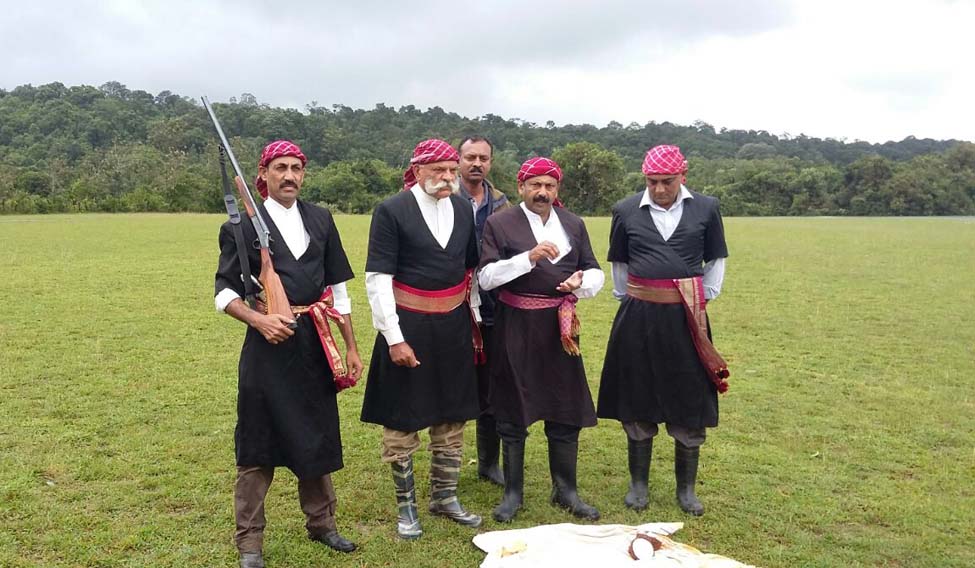Was Tipu Sultan a bigot or a patriot? The question remains unanswered, even as the Karnataka government is gearing up to celebrate Tipu Jayanti for the second consecutive year on November 10.
Last Year, the state witnessed unprecedented violence in Kodagu, even as pro-Tipu and pro-Hindu groups clashed, resulting in two deaths. This year again, the state has decided to go ahead with the celebrations amid growing resistance to the official event. Intellectuals and academics stand divided over Tipu’s ‘real’ identity.
This year, the anti-Tipu protests are not limited to Kodagu as coastal Karnataka and Chitradurga districts are opposing the government move to project Tipu as an icon.
Meanwhile, the writers and intellectuals stand divided over the issue. The RSS, VHP and BJP oppose glorification of Tipu as a patriot, alleging he was a bigot who persecuted Hindus and Christians.
The right-wing groups allege that Tipu Jayanti is part of minority appeasement of the Siddaramaiah government and have ‘advised’ the Congress party to choose better role models like Abul Kalam or Saint Kabir.
Interestingly, the government has decided to hold the celebrations amid tight security. They banned processions, deployed police, installed CCTVs and chalked out plans to monitor homestays and visitors to Kodagu during the event. Amid criticism over appeasement, the government has shifted the responsibility of the event from the Directorate of minorities to the Kannada and Culture department, which in turn backfired.
The Kodavas contend that the government is mocking their sentiment by propping Tipu as a hero, though he has massacred thousands of Kodavas. While the subsequent governments have failed to honour the Kodava demand for celebrating their heroes - Field Marshal Cariappa and General Thimaiah, the present government has imposed its decision to celebrate the 226th birth anniversary of a controversial ruler Tipu Sultan, and hailed him as a freedom fighter, rue Kodavas.
The Canara Catholics (Konkani) community alleged that Tipu carried out mass (forced) conversions and committed atrocities against their men, women and children suspecting that they supported the British. Meanwhile, women and Dalits groups in Chitradurga held a unique protest by flaunting ‘Onake’(pestle), to make a point that it was Haider Ali who killed the last tribal king of Chitradurga -- Madakari Nayaka and Onake Obavva, Dalit woman fighter in 1779. Obavva, the wife of a soldier, had killed Haider Ali’s soldiers with a pestle, when they sneaked into the Chitradurga Fort.
Even as the debate is heating up, the state stands more polarized than ever.
PITCHING THE DEBATE
- Former Kodava Sahitya Akademi president and a theatre personality Addanda Cariappa (citing “Pattole Palame”- a book by N.C. Chengappa published in 1924) in his latest book “Bachchitta Satya Bichchittaaga” (When a hidden truth is revealed) says Tipu captured nearly 80,000 Kodava men, women and children and converted them to Islam and formed eight regiments called the Ahmaddiyas. He sent four groups of Muslims – Sheikh, Syed, Mughal and Pathan to settle down in Kodagu to spread Islam.
- “Tipu Sultan X’Rayed” - an untold story of a puffed-up nawab, by I.M. Muthanna (1980), states -- “Tipu is said to have captured 70,000 Christians and 100,000 Hindus from Malabar to convert them (by forcible circumcision and compelling them to eat beef). This effectively answered the purpose of Tipu, as the people, after losing their caste and to retain respectability adopted Islam and educated their children in Muhammeddan religion and eventually obtained promotions in Tipu’s Army.”
- Imperial Gazeteer of India – Mysore and Coorg , 1908 and “Kodagina Itihasa” by historian D.N. Krishnaiah substantiate the claims of atrocities by Tipu.
- A book titled “A study of Origin of Coorg” by Lt Col K.C. Ponnappa states that, “The total number of massacred Kodavas could be 15,000 during Hyder Ali and Tipu’s regime (1765 to 1799) and accounts of the herding of 70,000 to 1,10,000 Coorgs by chroniclers (Lewis Rice, Richter and N Chinnappa) must be seriously discounted as they were perhaps misled. The forced exodus and conversions on a largescale were an exaggeration by Tipu himself to instill fear.”
- Ponnappa writes : During the rule of Haleri kings (1590), the population of the Coorgs was 25,000 to 35,000. In 1870 census, it was 24,585 against total population of 1,12,952 (as Haleti kings too had killed Kodava men and abducted their women). The numbers increased as 1901 census puts it at 36,091 (20 % of Kodagu population), 1971 – 60,000 and census 1991 (Justice Chinnappa Reddy Commission report) shows 92,000. However, the book does not rule out the atrocities.
- Kuvenda Hamsathulla, editor of “Kittale Nadu” and a member of Kodava Muslim Association, a Kodava Mapilla, argues his ancestors were not victims of forced conversions. “There are great writers in favour of Tipu including secular Kodava writers – like Lt Col Ponnappa and Dr Durgaprasad. Every ruler committed unsavoury acts. The anti-Tipu writers cite state gazetteers written by the British, who were always opposed to Tipu. Now, many Hindus converted to Islam inspired by Sufi cult. Like wise, we believe Kodava Mapillais are perhaps those Kodavas who embraced Islam inspired by Tipu. The massacres at Devatti Parambh are baseless. The communal groups have fabricated stories about forced conversions and massacre by Tipu to polarise Kodagu.
- Kannada writer Ko. Channabasappa, in his book, has sourced pictures of gold and silver articles donated to Sringeri Sharada temple, Sri Ranganatha Temple and Nanjangud temple by Tipu, to prove Tipu’s secular credentials.
- Historian K.M. Panikker has translated Tipu’s letters written to various rulers including Napoleon and Afghan rulers. The same was translated to English and Kannada by Dr Chidanandamurthy. Historian K.M. Panikker’s work – translation of Tipu’s letters, an analysis by Tipu’s son and a historical account by Tipu’s court historian Syed Hussain Kirmani, S.D. Sharma’s “The Real Tipu” and Pradhan Gurudutt’s “Tippuvina Nija Swaroopa” establish that Tipu wronged the Kodavas.





